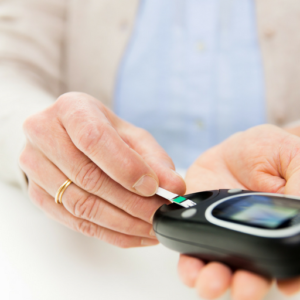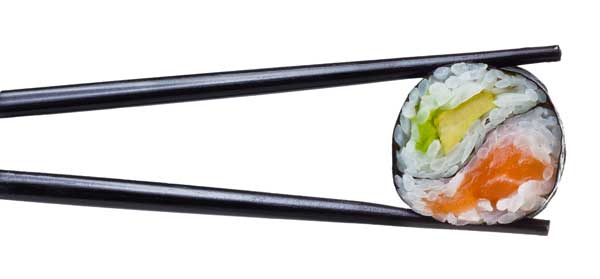9 Reasons Why the Glycemic Index is Not Accurate

Have you been avoiding fruits like watermelon and pineapple because you’ve read it has a high glycemic index? Glycemic index (GI) lists categorizing foods as high, medium and low glycemic are plastered all over the internet. There are numerous diet books and plans based on the GI of foods. They warn people to avoid the high and even medium GI foods because they will lead to weight gain, more belly fat and worsening of blood sugar and insulin resistance. It amazes me how many people follow these follow these lists to the T … almost obsessively. As a nutritionist and certified diabetes educator, I’m constantly having clients come to my office saying ‘I can’t eat XYZ” because it has a high GI. Well, here’s some news.
These lists are not as accurate as you think! In fact, there are 9 reasons as why the GI is not accurate. I’m not saying you should disregard them, just don’t take them as gospel truth. Here’s why ….
What is the glycemic index?
The glycemic index tells you how quickly a particular carbohydrate in a food causes blood sugar to rise. Foods are ranked on a scale of 0 to 100, with pure glucose (sugar) given a value of 100. The lower a food’s glycemic index, the slower blood sugar rises after eating that food. In general, the more cooked or processed a food is, the higher its GI, and the more fiber or fat in a food, the lower its GI. Protein and fat has negligible effects on blood sugar therefore the glycemic index of these foods will be very low. So don’t be so shocked when you see the GI of a food like peanuts or avocado. So adding protein, fat or fiber to a food will lower the GI. For example, a Peanut M&M’s has a GI of 33 as compared to an orange (GI= 45) and kidney beans (GI= 29). And we know which ones is healthier! GET THE GLYCEMIC INDEX CHART HERE
Here is how the GI is categorized:
- 70 and above is high
- 56-69 is medium
- 55 or less is low
What is the glycemic load?
Many experts believe the glycemic load (GL) is a better tool than the GI. Like the GI, it assesses the impact of food on blood sugar. But it gives a more comprehensive picture because it takes into account how much carbohydrate is available in a serving of food. For example – watermelon has a high GI (72). But since it contains so much water, so the GL is only 4, which is lower than most fruits. Pumpkin has a GI of 75 but a GL of only 3.5. So you can see, it gets a little confusing. I’d say the GL is a bit more accurate than the GI, but they both have downfalls. GET A DETAILED GLYCEMIC INDEX AND LOAD CHART HERE
Here is how the GL is categorized:
- 20 or more is high
- 11 to 19 is medium
- 10 or under is low
9 reasons why the glycemic index is not accurate
There are many factors affecting the GI and GL of foods which affect the “accuracy”. These factors include:
- The glycemic index of a food is based on you eating that
 one food alone. But most of us don’t eat this way. We eat foods in combinations with other foods.What the food is combined with. Eating protein, fiber, and especially fat will lower the GI. For example, having peanut butter on a slice of bread will lower the GI (even if it’s white bread!)
one food alone. But most of us don’t eat this way. We eat foods in combinations with other foods.What the food is combined with. Eating protein, fiber, and especially fat will lower the GI. For example, having peanut butter on a slice of bread will lower the GI (even if it’s white bread!) - How long the food is cooked and degree of processing. For example, al dente pasta has a lower GI than soft-cooked pasta. And steel cut oats has a lower GI than rolled or instant because it’s less processed.
- How ripe the food is. The more ripe a fruit or vegetable is the higher the GI. For example, ripe bananas have a higher GI than bananas that are less ripe.
- The temperature the food is eaten. For example, rice or potato that has been cooked and cooled has a lower glycemic index than it’s never been cooled or eaten warm.
- What is eaten before the food. Eating some protein or fat 15 minutes before the higher GI food will lower it’s GI. A recent study found that eating carbs at the END of your meal may help lessen the rise of blood sugar and insulin post meal.
- The GI doesn’t take into account the actual serving size of a carbohydrate containing food. For example, I previously gave the examples watermelon and pumpkin. They have a high GI, but low GL because they contain a fair amount of water.

And here are 2 sneaky REALLY IMPORTANT things I bet you never thought of: - Even within the same person, results vary with the time of day or even day to day. This study done at the Jean Mayer USDA Human Nutrition Research Center on Aging (USDA HRNCA) at Tufts University showed eating the same portion of the same food and the GI can can vary by an average of 20 percent within an individual. And the results for the same food eaten by various individuals can vary by 25 percent.
- Your genes. Our genes will play a role in how our blood sugar reacts to different carbs.
- Your gut microbiome plays a major role in how your body handles certain carbs and it’s blood sugar response. This is the most interesting reason to me … as I’m kind of obsessed with gut microbiome stuff. We all have about 5 pounds of bacteria living in and on us. The majority is in our gut. 70% of our immune system comes from our gut. In addition to gastro-intestinal health, research is also linking gut bacteria to heart health, obesity, risk of diabetes, metabolic syndrome, osteoporosis, mental health, allergies. A study done by Dr. Eran Segal and colleagues at the Weiztman Institute of Science demonstrated how the individual gut microbiomes of 800 study participants impacted the body’s blood sugar response to food. This was a fascinating study and worth reading. They were able to predict how the body would respond to various carbs by looking at the type of gut microbiome the person had. Listen to the podcast on the Quantified Body.
Bottom line
 The glycemic index and glycemic load can be used as tools to guide you on the effect of various carbs on blood sugar. In general, foods that are minimally processed will have a lower GI … and will be healthier overall. But keep in mind that they are only guides, as there are many factors that can change this. Don’t base your carb choice purely on GI … because it’s probably not even that accurate! Use common sense and choose healthier carbs (i.e. an orange over a snickers bar). If you are trying to mitigate the blood sugar rise after eating a food, keep in mind that portion size plays a major role in what happens to your blood sugar. Eating a large portion of any carb – even the healthier ones – will likely cause a significant rise in blood sugar. So consume all carbs in moderation (except for non-starchy veggies. Eat as much as you want!) and when possible, add some protein, fat and/or fiber when eating the carb as this will lower the GI.
The glycemic index and glycemic load can be used as tools to guide you on the effect of various carbs on blood sugar. In general, foods that are minimally processed will have a lower GI … and will be healthier overall. But keep in mind that they are only guides, as there are many factors that can change this. Don’t base your carb choice purely on GI … because it’s probably not even that accurate! Use common sense and choose healthier carbs (i.e. an orange over a snickers bar). If you are trying to mitigate the blood sugar rise after eating a food, keep in mind that portion size plays a major role in what happens to your blood sugar. Eating a large portion of any carb – even the healthier ones – will likely cause a significant rise in blood sugar. So consume all carbs in moderation (except for non-starchy veggies. Eat as much as you want!) and when possible, add some protein, fat and/or fiber when eating the carb as this will lower the GI.
And if you REALLY want to know the effect of a carbohydrate (or a combo meal), especially, you could do the following:
- You check out Day Two. DayTwo’s science provides a personalized nutrition profile that enables you to consume what is best for your body. The DayTwo Algorithm Diet™ will enable and empower you to discover foods and meals that balance your blood sugar levels
One of my clients just did this and it’s super interesting. It’s based on the research from Dr. Eran Segal. I think I’ll do a blog post on it in the future.If you have diabetes and need to know your blood in order to dose your meds, I would recommend: - Test your fingersticks about 1 1/2 hours after a meal
- The “gold standard” to assess the impact of a food on your blood sugar is to wear a continuous glucose monitor.
Do you have any questions on the GI or GL?
References:
https://www.health.harvard.edu/diseases-and-conditions/the-lowdown-on-glycemic-index-and-glycemic-load
https://www.health.harvard.edu/diseases-and-conditions/glycemic-index-and-glycemic-load-for-100-foods
http://www.mendosa.com
https://www.ncbi.nlm.nih.gov/pmc/articles/PMC4994556/
https://www.diabetesdaily.com/blog/diabetes-and-the-glycemic-index-is-it-really-accurate-280526/
RELATED POSTS
MEET MARTHA
I especially love problem-solving, whether it’s helping women defeat issues plaguing them for years, helping a busy executive find practical ways to get heart healthy, or providing tips to help you reverse diabetes. That’s why I’m on a constant quest to expand my knowledge by staying on top of the latest research.
5 Comments
Leave a Comment

20 Ways To Eat Out 550 Calories or Less!
No time to cook? We’ve got you covered. Here are 20 healthy meals from a variety of cuisines that won’t pack on the pounds. Most of them also have less than 30 grams of carbs.
Subscribe to my newsletter and get this free download.




the GL index you use for references it is wrong very wrong please checked it and please try to give right information to people thanks
Hi Jamil,
Which reference was incorrect? I’d like to check it out. thanks!
I think he is referring to the first chart. I have seen a lot of discrepancy especially with white rice and bread… for example white rice is 38 on your first (top) chart and 69-109 for different types of white rice in the lower chart. Similar difference with white bread.
ah – thanks! There is a huge discrepancy in rice and bread. There are MANY different types of white rice (and then it gets even more complicated with short grain, long grain, medium grain). But I see that you are referring to in the 2 charts. Took them down to avoid confusion. Thanks for letting me know!
If you want a low glycemic index and/or a low insulin index, go carnivore.
Consider this before you scoff. Three and a half million years ago, proto humans began making the first stone tools. About 2.8 million years ago we began walking upright. Although we had been making stone tools for over three million years, they were all for meat. The first tool used for tilling was the hoe less than 10,000 years ago, the stone plow did not appear until about 1,000 years later and the first domesticated animal to pull a plow was about 6,000 years ago. And in many places humans did not domesticate animals until the last millennium. In the Americas, when the Europeans arrived they had only domesticated the llama. And there were many places like this all over the world.
There is a good reason why carbohydrates are non-essential. We didn’t eat them for two or three million years. Here is the anthropological evidence.
https://phys.org/news/2021-04-humans-apex-predators-million-years.html
The field of nutrition needs to be reexamined. Carnivore is the proper human diet.